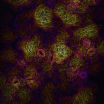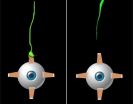(Press-News.org) STANFORD, Calif. — Dermatologists with access to free drug samples are more likely than those without access to samples to write prescriptions for drugs that are more expensive, according to a study by researchers at the Stanford University School of Medicine.
Although studies have shown that most physicians do not believe that the availability of free samples affects their behavior or recommendations for patients, the researchers found that the average retail cost of the prescriptions written by dermatologists with access to samples are about twice the cost of prescriptions written by dermatologists at an academic medical center where such samples are prohibited.
The results of the study, which will be published April 16 in JAMA Dermatology, are likely to add fuel to an ongoing debate about whether free drug samples are beneficial or instead skew the prescription tendencies of doctors to favor brand name drugs at the expense of patients and their health insurance companies.
"Physicians may not be aware of the cost difference between brand-name and generic drugs," said Alfred Lane, MD, emeritus professor of dermatology and of pediatrics at Stanford, "and patients may not realize that, by accepting samples, they could be unintentionally channeled into subsequently receiving a prescription for a more expensive medication."
Lane is the senior author of the study. Medical student Michael Hurley is the first author.
The researchers found that branded drugs (those still under patent to a particular company) and branded generics (a term that describes an alternative dosage or new formulation of an off-patent drug sold under a new name) comprised 79 percent of prescriptions written by dermatologists nationwide, but only 17 percent of those written by physicians at an academic medical center that prohibits its physicians from accepting drug samples. Branded drugs and branded generic drugs often have similar retail prices.
In contrast to some medical specialties, the percentage of prescriptions written with a sample by dermatologists increased from 2001 to 2010 from 12 to 18 percent. (The proportion for all other specialties decreased during the same time period from 7 to 4 percent.)
The impetus for the study was a policy instituted in 2006 by Stanford Medicine, prohibiting its physicians from accepting samples or other industry gifts. After the change, Lane noticed a discrepancy between the medications he tended to prescribe and those prescribed by other physicians in the community.
"I realized that patients were referred to Stanford with prescriptions for newly introduced, branded generics that were unfamiliar to me," Lane said. "Sometimes I had to look up what they actually were. It wasn't clear to me that there was much benefit to these drugs, and they were definitely very expensive."
Pharmaceutical companies give about $16 billion in free drug samples to doctors every year, according to some studies. Doctors and patients who receive the samples appreciate the option of trying out a medication to see if it works for a particular patient before paying for a prescription, and many clinicians feel this is a cost-effective way to help poorer patients who may not have insurance, or to allow a patient to choose a preferred medication to which he or she is most likely to adhere. However, Lane began to suspect that the availability of the samples may make it more likely for a doctor to prescribe a branded, or a branded generic, drug than to explore much cheaper generic drugs that could be just as effective.
"Many physicians believe that free samples have both benefits and drawbacks," said Hurley. "Primarily, they feel that the samples give them more freedom and flexibility to help people who are uninsured, or with less financial means. But the national data don't really support that. Those people are not the ones who are typically getting these samples."
Opponents of drug samples argue that doctors may not take as much care describing sample medications and their effects as they would for non-sample medications, and that the samples serve as a form of marketing to both doctors and patients to influence treatment decisions.
Lane and Hurley focused their study on medications prescribed to treat adult acne. They examined the prescribing patterns of dermatologists nationwide in a database called the National Disease and Therapeutic Index, which represents the results of a survey of primarily office-based physicians. Participating doctors regularly self-report many aspects of their clinical encounters, including whether they wrote a prescription for a particular drug (without also giving a sample), gave a sample of a medication (without writing a prescription), or gave both a sample of and a prescription for the same drug — that is, wrote a prescription with a sample.
In 2001, 2005 and 2010, the top five medications prescribed for adult acne changed, reflecting differences in available drugs and preferences in treatment approaches by doctors. However, within any individual year, there is considerable overlap among the most commonly prescribed medications and the availability of free samples for those medications. For example, in 2005, the top four most commonly prescribed medications for adult acne were also the top four medications prescribed with a sample.
Lane and Hurley then compared the prescribing patterns of physicians at the academic medical center with those of doctors in the database and calculated the retail price of prescribed medications for a single visit in 2010 for adult acne. They found the average cost of prescriptions for a patient treated by a doctor who received samples was around $465, versus about $200 for patients treated by a doctor without access to samples.
The researchers also found that Lane's original perception of the difference in prescribing patterns between community doctors and those at academic medical center was accurate. Only one of the top 10 medications prescribed at the academic medical center in 2010 was also in the top 10 nationwide. In fact, nine of the 10 most-commonly prescribed medications nationwide for adult acne were branded or branded generics, and only 21 percent of prescriptions written by doctors in the national database were for generic drugs. In contrast, 83 percent of prescriptions from the academic medical center were for generic drugs.
Between 33 and 62 percent of the time, nine of the top 10 nationally prescribed medications were prescribed with samples, although much cheaper generic versions existed for eight of these nine. "The negative consequences of free drug samples affect clinical practice on a national level, and policies should be in place to properly mitigate their inappropriate influence on prescribing patterns," the study says.
The researchers point out that they did not examine patient satisfaction in their study, or rates of adherence to medication regimens (one pill a day of an extended-release branded generic may be easier to stick with than two pills a day of a generic version of the drug, for example). But they urge both patients and physicians to reflect on the purpose of samples and their effect on health-care costs and pharmaceutical profits. At the same time they concede that their findings will likely be unpopular among their peers.
"At one time, we at Stanford really felt that samples were a very important part of our practice," said Lane. "It seemed a good way to help poorer patients, who maybe couldn't afford to pay for medications out-of-pocket, and we had the perception that this was very beneficial for patients. But the important question physicians should be asking themselves now is whether any potential, and as yet unproven, benefit in patient compliance, satisfaction or adherence is really worth the increased cost to patients and the health-care system."
INFORMATION:
Stanford professor of medicine Randall Stafford, MD, PhD, was also an author of the study. The research was supported by the National Institutes of Health (grants K24HL086703 and UL1RR025744).
Information about Stanford's Department of Dermatology, which also supported the work, is available at http://dermatology.stanford.edu.
The Stanford University School of Medicine consistently ranks among the nation's top medical schools, integrating research, medical education, patient care and community service. For more news about the school, please visit http://mednews.stanford.edu. The medical school is part of Stanford Medicine, which includes Stanford Hospital & Clinics and Lucile Packard Children's Hospital Stanford. For information about all three, please visit http://stanfordmedicine.org/about/news.html.
Print media contact: Krista Conger at (650) 725-5371 (kristac@stanford.edu)
Broadcast media contact: M.A. Malone at (650) 723-6912 (mamalone@stanford.edu)
Dermatologists with access to sample drugs write costlier prescriptions, Stanford study finds
2014-04-16
ELSE PRESS RELEASES FROM THIS DATE:
Free drug samples can change prescribing habits of dermatologists
2014-04-16
The availability of free medication samples in dermatology offices appears to change prescribing practices for acne, a common condition for which free samples are often available.
Free drug samples provided by pharmaceutical companies are widely available in dermatology practices.
The authors investigated prescribing practices for acne vulgaris and rosacea. Data for the study were obtained from a nationally representative sample of dermatologists in the National Disease and Therapeutic Index (NDTI), a survey of office-based U.S. physicians, and from an academic medical ...
Atypical brain connectivity associated with autism spectrum disorder
2014-04-16
Autism spectrum disorder (ASD) in adolescents appears to be associated with atypical connectivity in the brain involving the systems that help people infer what others are thinking and understand the meaning of others' actions and emotions.
The ability to navigate and thrive in complex social systems is commonly impaired in ASD, a neurodevelopmental disorder affecting as many as 1 in 88 children.
The authors used functional magnetic resonance imaging to investigate connectivity in two brain networks involved in social processing: theory of mind (ToM, otherwise known ...
For cells, internal stress leads to unique shapes
2014-04-16
From far away, the top of a leaf looks like one seamless surface; however, up close, that smooth exterior is actually made up of a patchwork of cells in a variety of shapes and sizes. Interested in how these cells individually take on their own unique forms, Caltech biologist Elliot Meyerowitz, postdoctoral scholar Arun Sampathkumar, and colleagues sought to pinpoint the shape-controlling factors in pavement cells, which are puzzle-piece-shaped epithelial cells found on the leaves of flowering plants. They found that these unusual shapes were the cell's response to mechanical ...
Researchers track down cause of eye mobility disorder
2014-04-16
Imagine you cannot move your eyes up, and you cannot lift your upper eyelid. You walk through life with your head tilted upward so that your eyes look straight when they are rolled down in the eye socket. Obviously, such a condition should be corrected to allow people a normal position of their head. In order to correct this condition, one would need to understand why this happens.
In a paper published in the April 16 print issue of the journal Neuron, University of Iowa researchers Bernd Fritzsch and Jeremy Duncan and their colleagues at Harvard Medical School, along ...
Scientists observe quantum superconductor-metal transition and superconducting glass
2014-04-16
The article "Collapse of superconductivity in a hybrid tin–grapheme Josephson junction array'" (authors: Zheng Han, Adrien Allain, Hadi Arjmandi-Tash,Konstantin Tikhonov, Mikhail Feigelman, Benjamin Sacépé,Vincent Bouchiat, published in Nature Physics on March 30, 2014, DOI:10.1038/NPHYS2929) presents the results of the first experimental study of the graphene-based quantum phase transition of the "superconductor-to-metal" type, i.e. transformation of the system's ground state from superconducting to metallic, upon changing the electron concentration in graphene sheet.
The ...
Stanford scientists develop 'playbook' for reverse engineering tissue
2014-04-16
STANFORD, Calif. — Consider the marvel of the embryo. It begins as a glob of identical cells that change shape and function as they multiply to become the cells of our lungs, muscles, nerves and all the other specialized tissues of the body.
Now, in a feat of reverse tissue engineering, Stanford University researchers have begun to unravel the complex genetic coding that allows embryonic cells to proliferate and transform into all of the specialized cells that perform myriad biological tasks.
A team of interdisciplinary researchers took lung cells from the embryos of ...
Red moon at night; stargazer's delight
2014-04-16
Monday night's lunar eclipse proved just as delightful as expected to those able to view it. On the East Coast, cloudy skies may have gotten in the way, but at the National Science Foundation's National Optical Astronomy Observatory (NOAO) near Tucson, Ariz., the skies offered impressive viewing, as seen from the pictures provided here.
Nicknamed a "blood moon," this lunar eclipse's color was similar to the majority of lunar eclipses. This has to do with the Earth's atmosphere's propensity for longer-wavelength light (e.g., the reds, oranges and yellows seen in sunrises ...
Information storage for the next generation of plastic computers
2014-04-16
Inexpensive computers, cell phones and other systems that substitute flexible plastic for silicon chips may be one step closer to reality, thanks to research published on April 16 in the journal Nature Communications.
The paper describes a new proposal by University of Iowa researchers and their colleagues at New York University for overcoming a major obstacle to the development of such plastic devices—the large amount of energy required to read stored information.
Although it is relatively cheap and easy to encode information in light for fiber optic transmission, ...
Two new species of yellow-shouldered bats endemic to the Neotropics
2014-04-16
Lying forgotten in museum collections two new species of yellow-shouldered bats have been unearthed by scientists at the American Museum of New York and The Field Museum of Natural History and described in the open access journal ZooKeys. These two new additions to the genus Sturnira are part of a recent discovery of three bats hidden away in collections around the world, the third one still waiting to be officially announced.
Up until recently the genus Sturnira was believed to contain only 14 species. In the last years closer morphological and molecular analysis have ...
Researchers: Obesity can amplify bone and muscle loss
2014-04-16
TALLAHASSEE, Fla. – Florida State University researchers have identified a new syndrome called "osteosarcopenic obesity" that links the deterioration of bone density and muscle mass with obesity.
"It used to be the thinking that the heavier you were the better your bones would be because the bones were supporting more weight," said Jasminka Ilich-Ernst, the Hazel Stiebeling Professor of Nutrition at Florida State. "But, that's only true to a certain extent."
The syndrome, outlined in the May issue of Ageing Research Reviews, explains how many obese individuals experience ...




